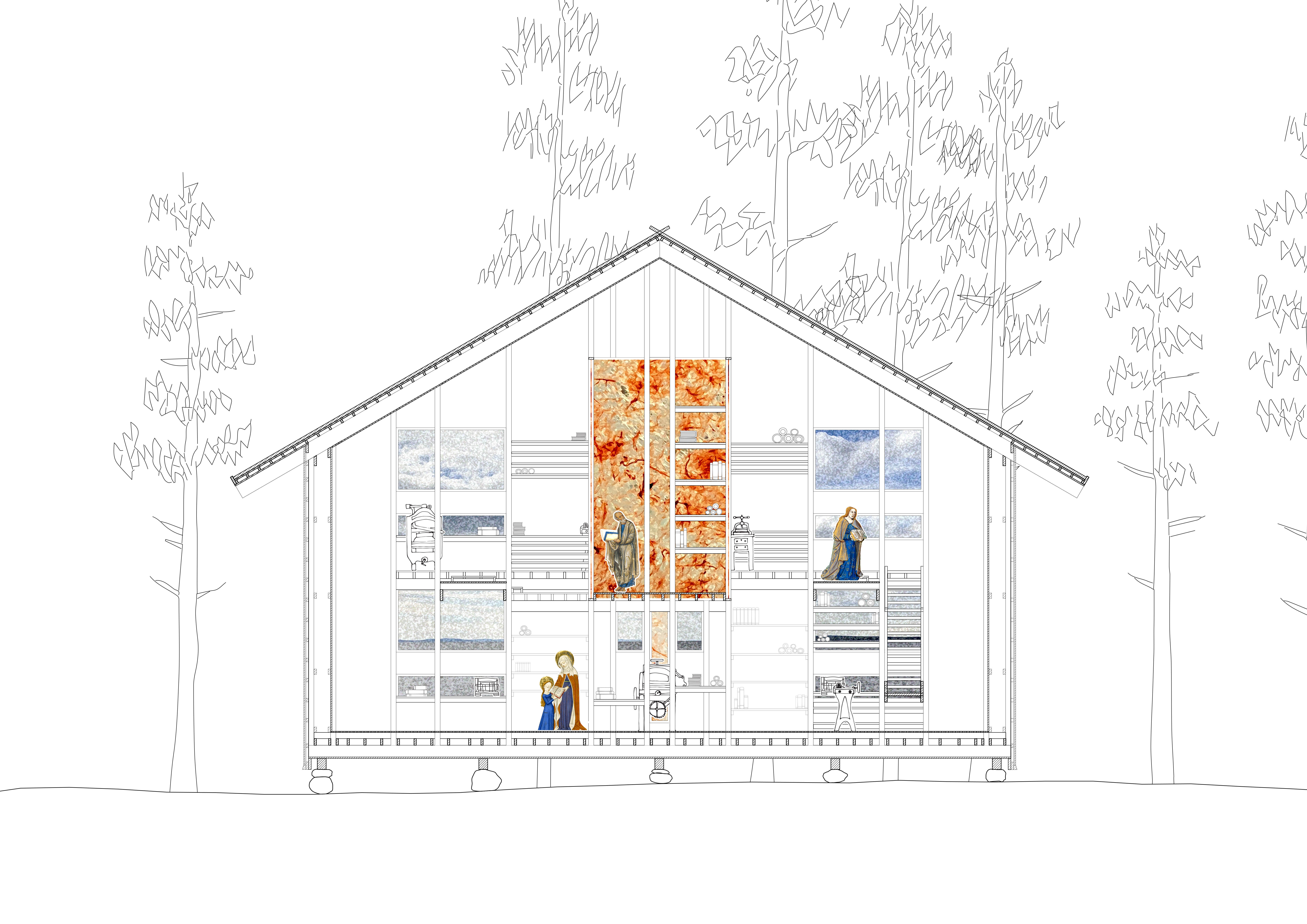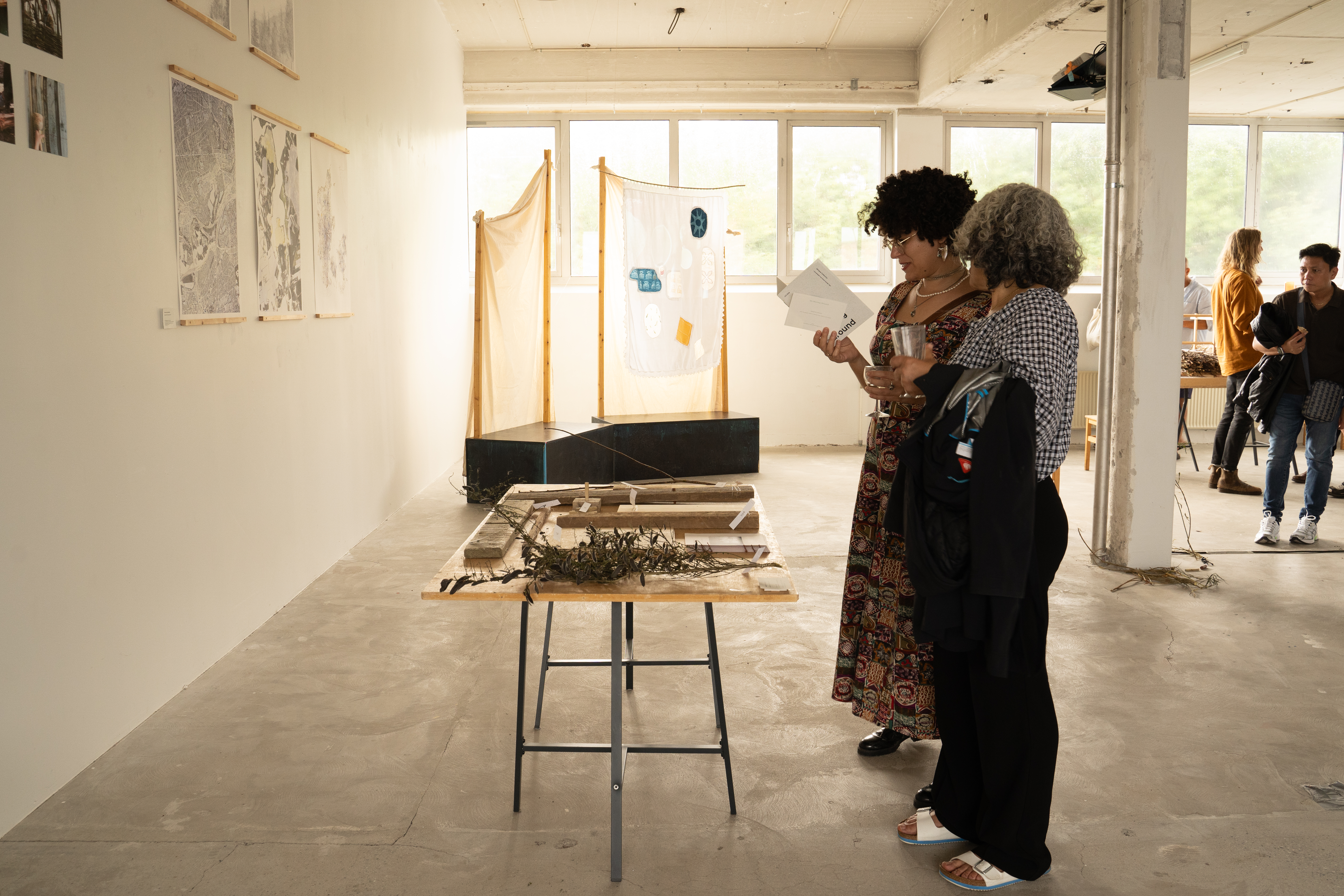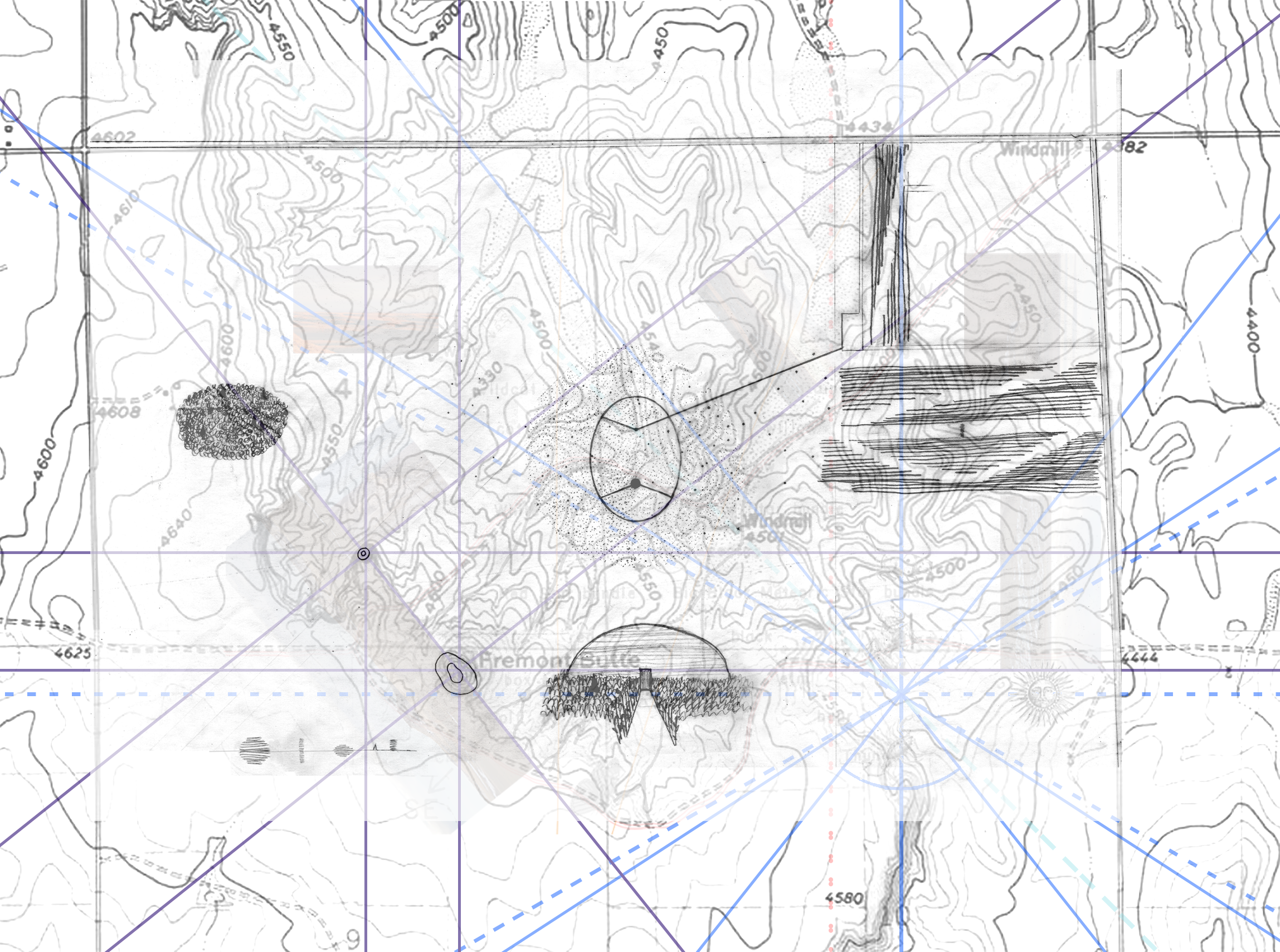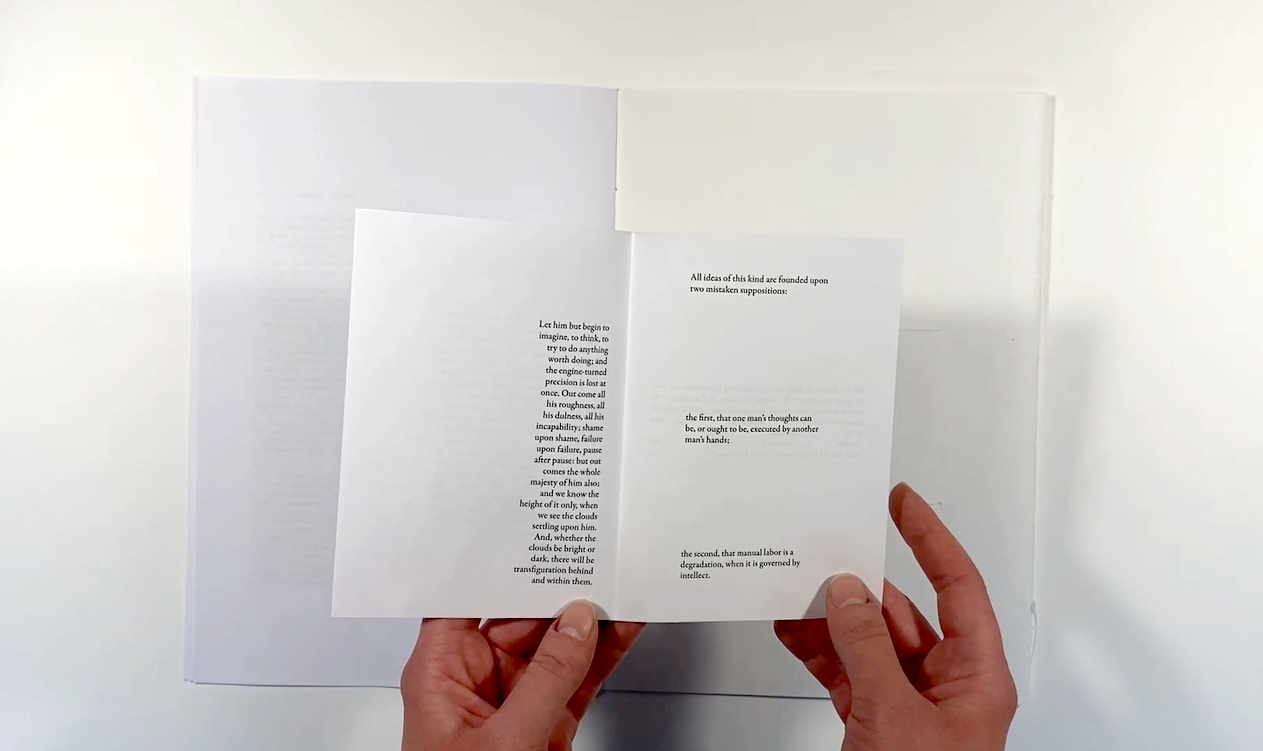
Center for Art and Artists
Parking Garage RenovationHamburg, Germany
Fall Semester Fourth Year, Exchange at TU Braunschweig
Fall Semester Fourth Year, Exchange at TU Braunschweig
A renovation of an existing parking structure was an opportunity for students to decide and develop a program. While the city of Hamburg has existing art museums, they are mostly historical and do not provide opportunities for emerging artists to work and display
their art. This project explores a center for the arts with space for art viewing and creation. The primary intervention is a central atrium which cuts through the existing concrete slabs and removes the spiral car ramp as a means of letting in light. Bridges which span this atrium then connect the spaces of the building both visually and physically, and become an opportunity for a dynamic viewing of the art.
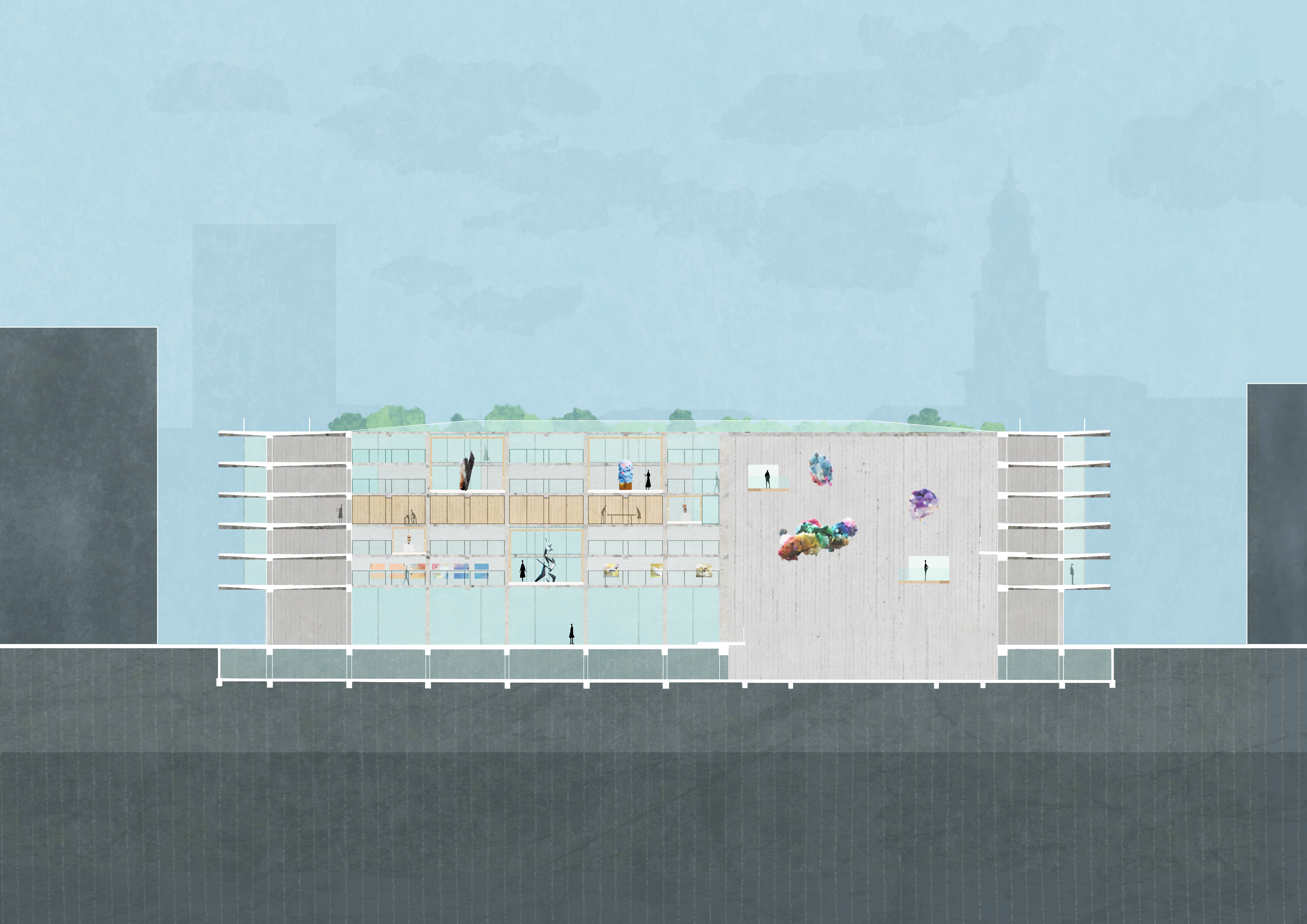

The ground floor houses the more public programs, such as the welcome area and shop for artists to sell their work, as well as a small cafe overlooking the canal. The rest of the floors are spaces for art display, with slab removed on the third and fifth floor for the display of taller works of art. The central fourth floor is where the studios and workshop facilities are located for the artists. Balconies and windows periodically pierce the wall of the circular atrium end for viewing of hanging artworks which might occupy this space.
![]()


The materials of the interventions were chosen as a contrast to the cold, harsh concrete of the existing structure. The bridges and balconies are made of CLT as the permanent fixtures of the architecture. The studio spaces, on the other hand, are separated by a movable wall system consisting of screens of stretched fabric over wood framing. This provides an opportunity for studios to be joined for artists working on bigger projects, groups of artists, or even neighboring artists who wish to collaborate with one another. Such flexibility is also found in the movable art display walls, so that gallery space can be expanded or reduced for different exhibitions. These simple, warm materials make clear where the architecture is intervening in the existing structure, while leaving the emphasis on the art on display.


